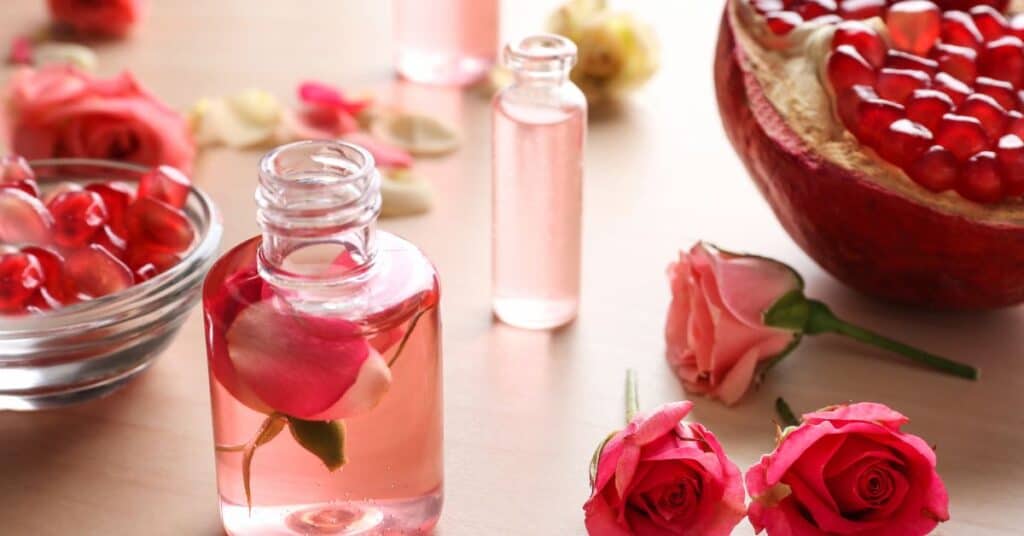Table of Contents
- What is gardener’s soap?
- What are the Recipe for Gardener’s Handmade Soap?
- How to make gardeners’ soap
- What are the benefits of gardener soap?
- How much essential oil should I add to my soap?
- Final thought
Would you want to know about essential oils for gardeners’ soap? In my experience, essential oils of lemongrass, orange, and palmarosa perfectly complete the citrus fragrance.
“I probably cleanse my hands twenty-five times per day while gardening. I appreciate your Gardener’s Hand Soap cleaning my hands without drying them out.
It even eliminates the oleander’s viscous juice. Recently, I’ve realized that certain essential oils are indispensable to the cold soapmaking process. Essential oils for Cold Process Soap making
While I occasionally incorporate oils not included in this list, producing affordable yet exceptional soap without these components would be challenging.
I consistently utilize and select these oils for the following reasons:
- The fragrance endures exceptionally well.
- They are priced affordably.
- A considerable number of them combine harmoniously to produce an extensive array of fragrances.
However, that is not all; I will provide additional information on the subject as you continue to read.
Now, let’s get started
What is gardener’s soap?
Gardener’s soap is an effective skin treatment that is highly stressed. It gently cleanses dead skin cells and quickly eliminates tough stains like dirt, resin, and grass.
It also has anti-inflammatory and therapeutic effects, which promote healthy skin.
Ingredients: Aqua (water), Olea Europaea Oil (olive oil), Canola Oil (rapeseed oil), Cocos Nucifera Oil (coconut oil), Sodium Hydroxide (NaOH),
Butyrospermum Parki Butter (shea butter), Vitis Vinifera Seed Oil (grape seed oil), Cera Flava (beeswax), Ricinus Communis Oil (castor oil), Papaver Somniferum (poppy seeds), Chamomilla Recutita Extract (chamomile), Salvia Officinalis Extract (sage),
Sodium Chloride (table salt), Avena Sativa Powder (oat flour), perfume (essential oils), Illite (clay),
- Citral,
- Coumarin,
- Geraniol,
- Linalool (*allergens that occur in both essential oils and perfume).
What are the Recipe for Gardener’s Handmade Soap?
If you would instead use the cold process method, you can quickly adapt this recipe to that format.
My friend manufactured the soap using the hot process method of soap production with some additional changes (sage tea and pummelo).
She makes it using the cold process method described in her fantastic book.
The recipe:
Gardener’s Hand and Body Exfoliating Soap Ingredients
Oil Mixture:
- 15 ounces of olive oil (Costco has the best and most affordable coconut and olive oil I’ve discovered.)
- 7 ounces of coconut oil
- 3 ounces of almond oil
- 2 ounces of castor oil
- The Lye Solution
- 10.26 ounces of tea with sage infusion
- 3.79 ounces Essential Oils of Lye:
- 1 ounce of essential oil rosemary
- 1 ounce of essential peppermint oil
Texture:
Use 2 tablespoons of pumice, but you could use fine coffee grinds or black pepper to make the soap even more scrubby and help remove more filth and grime.
How to make gardeners’ soap
A recipe for a gardener’s soap that works well must include a lot of palm kernel oil, coconut oil, and other oils that help the soap clean properly.
I’ll provide my precise gardener’s soap recipe formula below, and there will be many photographs to help you visualize every step of the instruction.
Remember that our recipe for gardener’s soap yields a 5-pound batch of soap, which is ideal for using either a 5-pound acrylic soap mold or a 5-pound wooden soap mold from Soap Making Resource.
I hope you find it entertaining!
Purchase our recipe kit for gardener’s soap and begin eliminating dirt and grime naturally right now!
1.5 pounds of palm kernel oil, 1.5 pounds of 76-degree coconut oil, 16 ounces each of olive, avocado, and castor oils, 2 ounces of cranberry seeds, 2 ounces of premium lavender essential oil,
1 ounce each of rosemary and tea tree essential oils and 2 ounces of cranberry seeds are all included in the kit.
The materials listed above will provide you with more than enough components to produce the five-pound batch of soap, you’ll have enough extras for further soapmaking endeavors!
The only ingredients you need to supply are the distilled water and lye. Most neighborhood hardware stores have lye, while the grocery store sells distilled water.
I will provide contact details for my personal lye supplier with your kit so you will know exactly where to purchase lye if you can’t locate any nearby!
I suggest getting one of the five-pound wooden or acrylic log soap molds from Soap Making Resource. Both will function flawlessly with this batch!
What are the benefits of gardener soap?
This bar is excellent for everyone, gardener or not, as it removes pollutants from everyone’s skin while detoxifying, moisturizing, exfoliating, cooling, and soothing.
It moisturizes and softens the skin while clearing it of oil, debris, and filth. Effective in getting rid of obstinate sap!
It was first developed for gardeners, but mechanics and cooks have also come to love it.
But it’s crucial to remember that not every soap is made equally. Selecting a mild, natural soap is essential because some contain harsh chemicals that might damage your plants.
Using soap sparingly is crucial since overdoing it might be detrimental to your plants.
Adding soap to your gardening practice can help your plants in a number of ways. Soap may help plants flourish by supplying natural nutrients and managing pests and illnesses. Why not attempt it, then?
How much essential oil should I add to my soap?
The problem with essential oils is that, aside from an initial acceptable consumption rate, each one has an overall maximum rate and shouldn’t be combined with “Other ingredients” due to possible sensitivities.
However, the general practice is to list the components from most significant to most minor quantities so that you might perhaps get an idea of how much of a particular item there is.
Olive oil, water, palm oil, coconut oil, sodium hydroxide, cocoa butter, shea butter, fragrance oil, and castor oil are the ingredients for my recipe.
If I were to use that label, “Other ingredients” would refer to substances that make up less than 1%, such as colorants and one tea PPO each of kaolin clay and sodium lactate.
Generally speaking, you should use 3% to 5% by weight of the essential or fragrance oil’s base oil.
For instance, you may add between 30 and 50 grams of fragrance to a formula that calls for 1000 grams of base oils.
Each essential oil is unique and has a range of strengths. Since anise, clove, cinnamon, and other strong odors can be overbearing to the senses, I would advise against adding many of them to a recipe.
Certain fragrances like cinnamon and clove might also make the skin more sensitive. how to mix fragrance oil for soap making.
Final thought
Now that we have established the Essential oils for gardeners’ soap, Investing in fragrance oils is recommended if you want a smell constancy that is not overly sensitive to even the most minute alterations.
Essential oils, as was said before, are more prone to volatility and more responsive to outside forces. Differences between essential oil and fragrance oil.
Adding 0.7 ounces of fragrance or essential oil for every pound of cold process soap is possible to provide a powerful impression.
Add 0.3 ounces for every pound of material you want to melt and pour. This figure will change depending on the type of oil that you select.
Take, for example, the Cherry Almond Fragrance Oil, which is quite potent.



